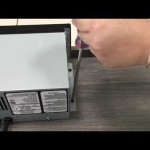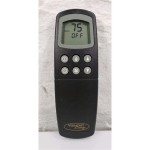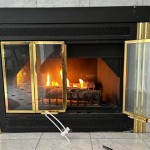Wood Burning Fireplace Insert Reviews: A Comprehensive Guide
Wood burning fireplace inserts represent a significant upgrade for homeowners seeking to enhance the efficiency and environmental friendliness of their existing masonry fireplaces. These appliances are designed to fit directly into a fireplace opening, transforming what is often an inefficient heat source into a powerful and controllable heating system. Understanding the nuances of these inserts is crucial for selecting the right model to meet specific heating needs and aesthetic preferences. This article provides a comprehensive overview of wood burning fireplace inserts, exploring key features, performance metrics, and considerations for making an informed purchase decision.
A traditional open fireplace, while aesthetically pleasing, suffers from considerable energy loss. Much of the heat generated escapes up the chimney, resulting in minimal room heating and increased fuel consumption. A wood burning fireplace insert addresses this issue by creating a closed combustion system. This controlled environment allows for more complete combustion of the wood, resulting in higher heat output and reduced emissions. The insert itself is typically constructed of heavy-duty steel or cast iron to retain and radiate heat effectively.
The primary benefit of installing a wood burning fireplace insert is increased heating efficiency. Instead of losing heat through the chimney, the insert directs it back into the room. This can significantly reduce reliance on central heating systems, leading to lower energy bills. Furthermore, modern inserts are designed with features like blowers and catalytic combustors to further enhance heat distribution and reduce harmful emissions.
When evaluating wood burning fireplace inserts, several factors must be taken into account, including heating capacity (measured in BTUs), firebox size, efficiency ratings, emission standards, and installation requirements. A thorough understanding of these aspects will empower homeowners to select an insert that best suits their individual circumstances and local regulations.
Understanding Heating Capacity and Firebox Size
Heating capacity, measured in British Thermal Units (BTUs), indicates the amount of heat an insert can generate per hour. The appropriate BTU rating for a given space depends on factors such as the room's square footage, insulation levels, ceiling height, and climate. Generally, a larger room in a colder climate will require an insert with a higher BTU rating. Manufacturers typically provide guidelines on the recommended heating area for each model. However, it is advisable to consult with a qualified installer to accurately assess heating needs and ensure proper sizing.
Firebox size refers to the volume of the combustion chamber, which dictates the maximum size of wood that can be loaded into the insert. A larger firebox allows for longer burn times, reducing the frequency of wood loading. This is particularly beneficial for homeowners who rely on the insert as a primary heating source. However, a larger firebox also requires more wood to achieve optimal combustion. Therefore, selecting a firebox size that aligns with heating needs and fuel availability is crucial. Users must understand the size and weight limitations of the wood they input. Overfilling the firebox can diminish performance and cause safety concerns.
The relationship between heating capacity and firebox size is important. An insert with a high BTU rating but a small firebox may require frequent refueling, negating some of its efficiency benefits. Conversely, an insert with a large firebox but a low BTU rating may not provide sufficient heat for a larger space. Therefore, balancing these two factors is essential for optimal performance and user convenience.
Consider the type of wood that will be burned. Different wood species have varying heat outputs per unit volume. Hardwoods, such as oak and maple, generally provide more heat than softwoods like pine. A homeowner who primarily burns softwood may need to select an insert with a slightly higher BTU rating compared to someone who burns hardwood.
Evaluating Efficiency and Emission Standards
Efficiency ratings indicate the percentage of energy from the wood that is converted into usable heat. A higher efficiency rating translates to lower fuel consumption and reduced heating costs. Modern wood burning fireplace inserts typically have efficiency ratings ranging from 60% to 80% or higher. The Environmental Protection Agency (EPA) requires all new wood burning appliances to meet stringent emission standards, aimed at reducing air pollution. These standards limit the amount of particulate matter that can be released into the atmosphere.
There are two main types of wood burning fireplace inserts: catalytic and non-catalytic. Catalytic inserts utilize a catalyst, typically made of platinum or palladium, to reduce emissions and improve combustion efficiency. The catalyst promotes the oxidation of unburned gases and particles, resulting in cleaner emissions and higher heat output. Non-catalytic inserts rely on advanced firebox designs and air injection systems to achieve cleaner burning. Both types can meet EPA emission standards, but catalytic inserts often offer slightly higher efficiency and lower emissions.
The EPA’s emission standards are constantly evolving. Staying informed about the latest regulations is crucial when selecting a wood burning fireplace insert. Choosing an EPA-certified insert ensures compliance with environmental regulations and contributes to cleaner air quality. Failure to comply with these regulations can result in fines or other penalties.
Beyond EPA standards, some states and municipalities have their own regulations regarding wood burning appliances. It is important to check with local authorities to ensure compliance with all applicable rules and restrictions. These regulations may include limitations on the types of wood that can be burned, restrictions on burning during certain times of the year, and permitting requirements for installation.
Analyzing Installation Requirements and Safety Considerations
Proper installation is critical for the safe and efficient operation of a wood burning fireplace insert. Installation typically involves connecting the insert to a chimney liner, which is a stainless-steel pipe that runs the length of the chimney. The chimney liner prevents creosote buildup and ensures proper venting of combustion gases. It is highly recommended that installation be performed by a qualified professional installer who is familiar with local building codes and safety regulations.
The existing chimney must be inspected to ensure it is in good condition and suitable for use with a wood burning fireplace insert. Cracks, leaks, or other damage can compromise the safety and efficiency of the system. A professional chimney sweep can perform a thorough inspection and recommend any necessary repairs or upgrades.
Furthermore, proper safety measures must be in place to prevent fires and carbon monoxide poisoning. A carbon monoxide detector should be installed near the insert and tested regularly. It is also important to have a fire extinguisher readily available and to practice safe wood storage and handling procedures. Never store wood too close to the insert or other heat sources.
Regular maintenance is essential for ensuring the long-term performance and safety of a wood burning fireplace insert. This includes cleaning the chimney flue regularly to remove creosote buildup, inspecting the insert for any signs of damage or wear, and replacing worn-out parts as needed. Adhering to the manufacturer's recommended maintenance schedule will help to prolong the life of the insert and prevent costly repairs.
When choosing an installer, verify their credentials and experience. Request references from previous clients and inquire about their knowledge of local building codes and EPA regulations. A reputable installer will be able to assess the existing fireplace and chimney, recommend the appropriate insert model, and perform the installation safely and efficiently. Also, they can provide information on the correct operation method of the insert.
Finally, consider the long-term costs associated with owning a wood burning fireplace insert. This includes the cost of the insert itself, installation fees, fuel costs, and maintenance expenses. While the initial investment may be significant, the long-term savings on heating bills and the increased comfort and aesthetic appeal of a wood burning fireplace insert can make it a worthwhile investment for many homeowners.

Osburn 2000 Black Epa Wood Stove Insert Review Forestry Reviews

Superior Wood Burning Fireplace Review Fireplaces Direct Learning Center

Ironstrike Montlake 230 Wood Stove Insert Fireplace Ml230gl Review Forestry Reviews

Wood Fireplace Insert Comparison Chart Rockford Chimney

Wood Fireplace Inserts Fireplaces Direct Learning Center

Best Wood Burning Fireplace Insert With Blower Forestry Reviews

Majestic Biltmore Wood Fireplace Series Fireplaces Direct Learning Center

What Will Make Your Fireplace Energy Efficient Rockford Chimney

Best Wood Burning Fireplace Insert Reviews Top 10 2024 Inserts

Osburn 2000 Wood Burning Fireplace Insert Hearth Stove Patio
Related Posts








